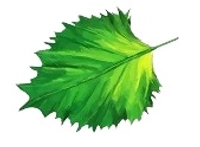Transform Your Home with the Elegant Green Money Plant (Epipremnum aureum)
Bring a touch of nature indoors with the lush and vibrant Green Money Plant, also known as Epipremnum aureum. This popular indoor plant, native to the Solomon Islands, is loved for its heart-shaped, glossy leaves that grow abundantly, creating a cascade of green beauty. The Green Money Plant is not only easy to care for but also known for its numerous indoor benefits, making it a perfect addition to any home or office space.
Indoor Benefits
- Air Purification: The Green Money Plant is an excellent air purifier. It absorbs pollutants like formaldehyde, xylene, and benzene from the air, enhancing the overall indoor air quality.
- Aesthetic Appeal: With its trailing vines and lush foliage, the Green Money Plant adds a touch of natural elegance to your space. It's perfect for hanging baskets, shelves, or as a tabletop centerpiece.
- Stress Reduction: Studies show that having indoor plants like the Green Money Plant can reduce stress and increase a sense of well-being. Its green foliage brings a calming effect to any room.
- Humidity Regulation: The Green Money Plant helps maintain humidity levels, making your indoor environment more comfortable, especially in dry or air-conditioned spaces.
Plant Care Instructions
- Light: Place your Green Money Plant in bright, indirect sunlight. It can tolerate low light conditions but thrives best in bright, filtered light.
- Watering: Water the plant when the top inch of soil feels dry. Overwatering can lead to root rot, so ensure the pot has good drainage. In winter, reduce the frequency of watering.
- Soil: Use a well-draining potting mix. A mix designed for houseplants, with added perlite or sand, is ideal.
- Humidity: This plant prefers moderate humidity. If your home is very dry, mist the leaves occasionally or use a humidity tray.
- Temperature: The Green Money Plant enjoys temperatures between 60-75°F (15-24°C). Keep it away from cold drafts and direct heat sources.
- Fertilizing: Feed the plant with a balanced liquid fertilizer every 4-6 weeks during the growing season (spring and summer). Reduce feeding in fall and winter.
Common Problems and Solutions
- Yellowing Leaves: This is often a sign of overwatering. Ensure the soil is well-drained and let it dry out between waterings.
- Brown Tips on Leaves: This can be due to low humidity or excess fluoride in the water. Increase humidity levels and use distilled or rainwater if possible.
- Pests: Spider mites and mealybugs can occasionally infest the plant. Treat with insecticidal soap or neem oil, and wipe the leaves with a damp cloth to remove pests.
- Slow Growth: Lack of light or nutrients may cause slow growth. Move the plant to a brighter location and ensure regular feeding during the growing season.
Please Note: Images are for reference purposes only. Actual product may vary in shape or appearance based on climate, age, height, etc. The product is replaceable but not returnable.
